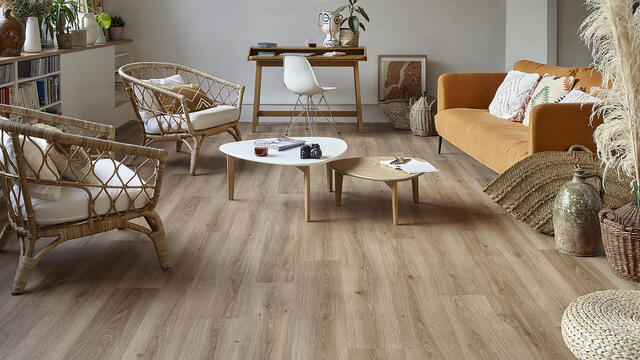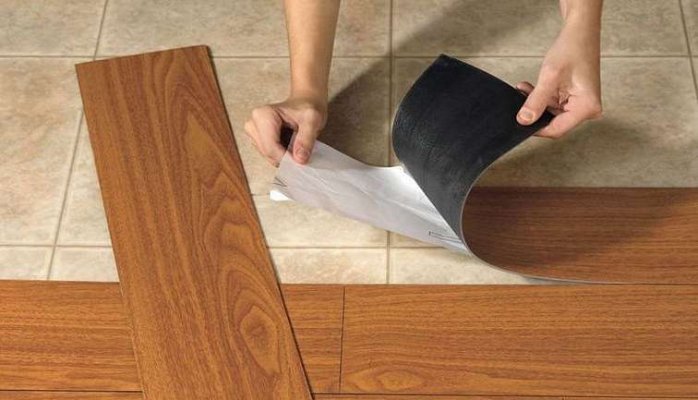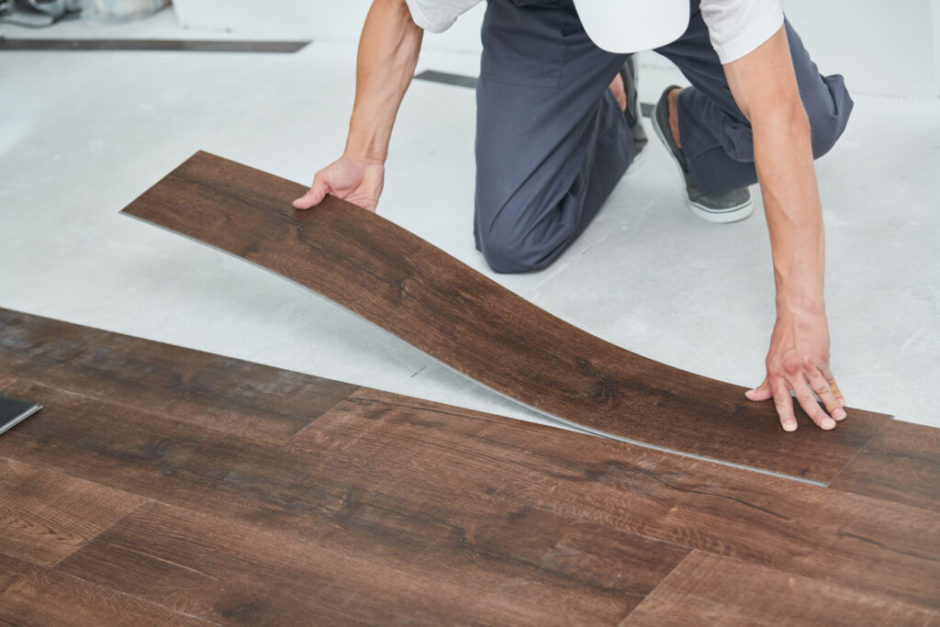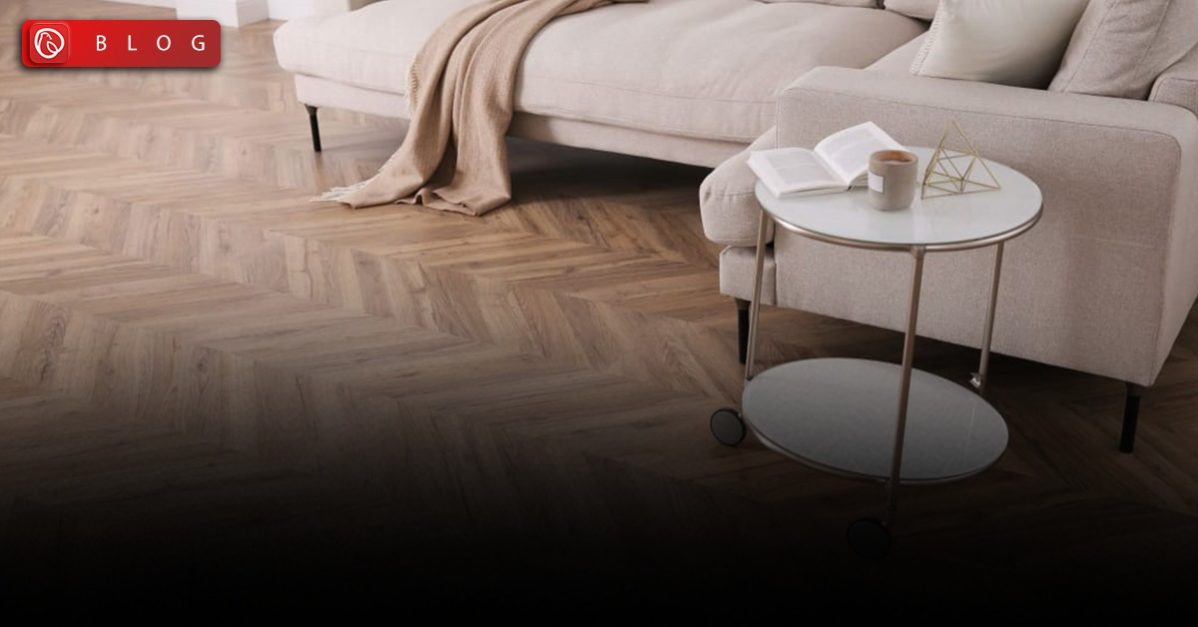Are you looking for a new flooring option for your home? Do you want something durable, easy to maintain and affordable? If so, you might want to consider vinyl flooring. It is a synthetic material that can mimic the look of natural materials, such as wood, stone or marble.
It comes in different forms, such as planks, tiles or sheets, and it can be installed over various subfloors, such as concrete, plywood or existing flooring.
In this blog, Graana.com explores some of its benefits and drawbacks, along with some tips on how to install it in your home.
Types of Vinyl Flooring

Vinyl flooring is a popular choice for homes and offices because of its durability, affordability and variety of styles. There are different types to suit a variety of needs and preferences. The following are some of the most common types available, along with their features.
Sheet Vinyl Flooring
This type of vinyl flooring comes in large rolls that are cut to fit the size and shape of the room. Sheet vinyl is easy to install and maintain, as it has no seams or gaps where dirt and moisture can accumulate.
It is also water-resistant and stain-resistant, making it ideal for kitchens, bathrooms and laundry rooms. It can have different patterns and textures, such as wood grain, marble or geometric designs.
Tile Vinyl Flooring
This comes in individual tiles that are glued or snapped together to form a floor. Tile vinyl is more versatile and customisable than sheet vinyl, as it allows you to create different patterns and layouts with a range of colours and sizes of tiles.
It is also easier to replace if a tile gets damaged or worn out. It can have different finishes, such as glossy, matte or textured.
Plank Vinyl Flooring
Plank vinyl flooring comes in long planks that resemble hardwood flooring. It is designed to mimic the natural look and feel of wood, with grains, knots and colours.
It is more durable and resistant to scratches and dents than real wood, as well as more affordable and easier to install. It comes in different styles, such as rustic, modern or classic.
Luxury Vinyl Flooring
This is a high-end option that offers the best quality. Luxury vinyl is thicker and more resilient than other types of vinyl flooring, with a wear layer that protects it from scratches, stains and fading.
It also has a realistic 3D effect that makes it look like real wood, stone or ceramic. It can have different features, such as embossing, beveling or grout lines.
Advantages of Vinyl Flooring
Following are the major advantages of this type of flooring.
Water-Resistant
One of the biggest advantages of vinyl flooring is that it is waterproof flooring. This means that it can withstand spills, splashes, humidity, and moisture without warping, swelling, or rotting.
This makes it ideal for areas that are prone to water exposure, such as kitchens, bathrooms, laundry rooms, basements, or outdoor patios. You don’t have to worry about mould, mildew, or bacteria growth on your vinyl floors, as they are easy to clean and sanitise.
Variety of Designs and Colours
Vinyl flooring is available in a wide range of colours, patterns, and designs, making it a versatile option that can match any décor. It can mimic the look of other flooring materials, such as hardwood, stone, and ceramic tile, giving homeowners and designers a range of options to choose from.
Easy to Install

Vinyl flooring is also easy to install. It comes in different forms: planks, tiles, or sheets. Planks and tiles are designed to snap together with a click-lock system, which makes them easy to lay over any subfloor without glue or nails.
Sheets are more suitable for large areas and require adhesive to stick to the subfloor. Vinyl flooring can also be installed over existing floors, such as hardwood or ceramic tile, as long as they are smooth and level.
Appearance
Vinyl flooring can mimic the look and feel of natural materials like wood, stone, tile, or marble with realistic textures and patterns. It also comes in a wide range of colours, styles, and designs that can suit any decor and taste. You can create any look you want, from rustic to modern, from classic to trendy.
Disadvantages of Vinyl Flooring
Following are some of the drawbacks of using this type of flooring.
Not Eco-Friendly
Vinyl flooring is made of PVC, a synthetic material that is not biodegradable and can release harmful chemicals during its production and disposal. This can have a negative impact on the environment and human health, making it a less sustainable option for flooring.
Susceptible to Scratches and Dents
While it is durable, it is not as resistant to scratches and dents as other flooring materials such as hardwood floor and tile. Heavy furniture or sharp objects can leave permanent marks on the surface, requiring homeowners to take extra precautions to protect the floor.
Not as Long-Lasting as Other Flooring Options
It is also not as durable as other flooring materials, such as flooring tiles. Over time, the surface can wear down or become discolored, requiring homeowners to replace their floor sooner than they would have with other options.
Installation Process

Before you install vinyl sheet flooring, you need to prepare the floor and measure the room. Here are some steps to follow:
Removing Furniture and Baseboards
Remove any furniture, appliances, baseboards or trim from the room. You can install the flooring over most existing floors, as long as they are rigid, flat, smooth and dry.
However, if you have carpet, you need to remove it along with any padding or adhesive underneath. You also need to remove any nails, staples or screws that are sticking out from the floor surface.
Checking the Floor
Check the floor for any moisture or dampness issues. If you are installing the flooring over concrete, you can do a simple test by placing a plastic sheet over the floor and sealing it on all sides.
Leave it overnight and check for any condensation under the plastic sheet. If there is any moisture, you need to fix the problem before proceeding with the installation process.
Measuring Length and Width
Measure the length and width of the room and add 75 mm (3 inches) to each dimension. This will allow you to have some extra material for cutting and trimming.
You can buy vinyl sheet flooring in rolls of different widths and lengths. Choose a roll that is large enough to cover your room with one piece or as few pieces as possible.
Unroll the Vinyl Sheet
Unroll the vinyl sheet on the floor and let it acclimate for 24 hours. This will help it adjust to the temperature and humidity of the room, and prevent any shrinkage or expansion later. Make sure the vinyl sheet is flat and smooth on the floor and does not have any wrinkles or bubbles.
Cutting Vinyl Sheet
Use a utility knife and a straight edge to trim off any excess material along the walls. Leave a small gap of about 6 mm (1/4 inch) between the vinyl sheet and the wall to allow for expansion and contraction. For areas around doorways, cabinets or fixtures, make small cuts or slits in the vinyl sheet and fit it around them.
After you cut the sheet to fit the room, you need to secure it to the floor. There are two methods to do this.
- Full-bond
- Perimeter-bond
Full-Bond Method
This method involves applying adhesive to the entire floor surface and pressing the vinyl sheet into it. This provides a stronger bond and prevents any movement or curling of the edges. However, it also requires more adhesive, more tools and more time.
Perimeter-Bond Method
This method involves applying adhesive only along the edges and seams of the vinyl sheet. It is easier and faster than the full-bond method, but it also provides less stability and durability.
Applying Adhesive
To apply adhesive, follow these steps:
- Roll back half of the vinyl sheet and apply adhesive to the exposed floor area using a notched trowel or a paint roller. Follow the manufacturer’s instructions on how much adhesive to use and how long to wait before laying down the vinyl sheet.
- Carefully roll it back over the adhesive and press it firmly with your hands or a roller. Make sure there are no air bubbles or wrinkles underneath.
- Repeat the same process for the other half of the vinyl sheet.
- Wipe off any excess adhesive that comes out from the edges or seams with a damp cloth or a knife.
- Roll it over with a heavy roller to ensure a good bond between the vinyl sheet and the adhesive.
Final Touches
After installation, you can add a few finishing touches:
- Replace any baseboards or trim that you removed earlier. You can also add shoe moulding along the edges of the vinyl sheet to cover any gaps or imperfections.
- Seal any seams between pieces of the vinyl sheet; this will prevent any dirt or moisture from getting into them and causing damage.
Conclusion
Vinyl flooring is a versatile and cost-effective flooring option for any space. It comes in a wide range of styles, patterns, and colours, allowing you to customise it according to your needs and preferences.
For more information, visit Graana.com.




